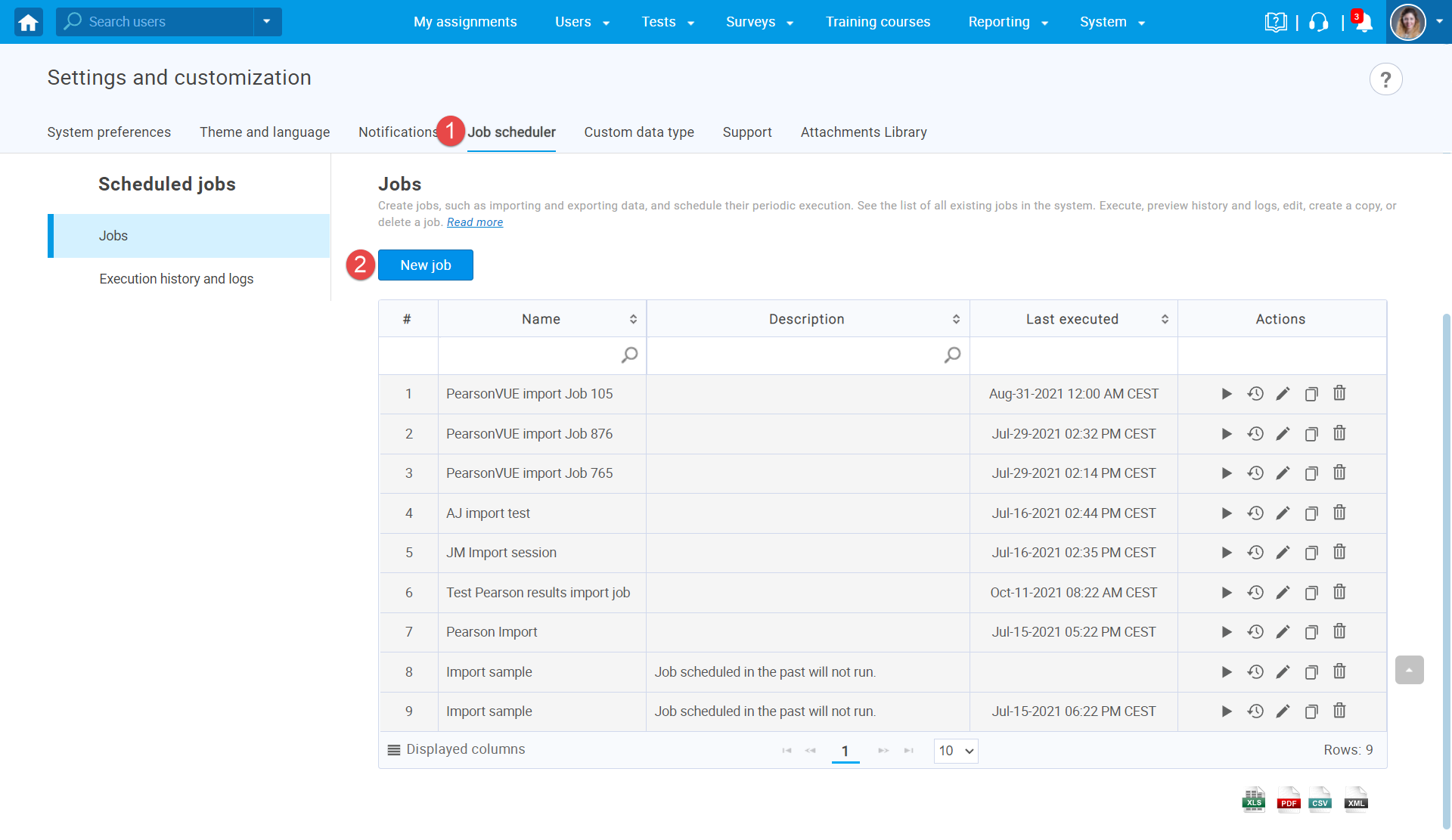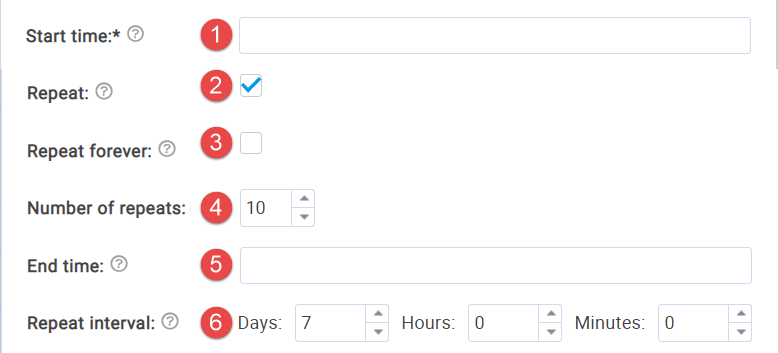This article explains how to create Jobs to exchange files between external systems and YouTestMe GetCertified.
Creating a new Job
Navigate to the “System” tab in the main menu and then choose the “Settings and customization” option.

Note: On the “Jobs Scheduler” tab, you can create jobs that will be executed at the scheduled time, as many times as you require. The job allows you to automatically import the data from an external system into the YouTestMe GetCertified and export data from the YouTestMe GetCertified to an external system.
To create and schedule a new Job:
- Navigate to the “Jobs scheduler” tab.
- Click the “New job” button.

A pop-up window will appear where you should enter all the necessary information to create and schedule a job.
The new job consists of the following three sections:
- Job information – General information about the job, including type, name, and description.
- Schedule settings – Parameters of the schedule, start time, end time, repeat interval, and the number of repeats.
- Job parameters – Parameters that are specific to the particular job.
Job Information
This part is the same for each job regardless of the type you choose.
- Choose whether you want to import or export data from YouTestMe GetCertified.
- Enter the job name.
- Optionally enter the job description.
Schedule settings
This part is the same for each job regardless of the type you choose.
- Choose the start time, the time when the job will be executed for the first time. If the chosen start time is in the past, the first execution will occur next time according to schedule or will not occur if the job does not repeat.
- Check the “Repeat” option to repeat the job periodically in equal time intervals after the start time. If it is unchecked, the job will execute only once, at the start time.
- Check the “Repeat forever” option to repeat the job indefinitely or until the end time if specified.
Job parameters
Import data job parameters
To create a new “Import data” job, do the following:
1. Choose the type of data to import. You can choose between:
- Users (User accounts).
- Tests (Items).
- Testing sessions (Scheduled offerings).
- Session candidates (User enrollments).
-
2. Choose the “Location” from which you will import the files with data. You can choose between:
- “File system” – import data from files located in the folder on the server’s file system.
- “SFTP server”– import data from files located in the SFTP server folder. For the SFTP server, additional parameters have to be specified.
3. Enter the absolute path to the folder in the chosen location to import files from.
4. Enter the regex expression to match the names of the files to import from the folder. For example, the regex expression “Users_.*\.csv” will match all the files whose name starts with “Users_” with the “.csv” extension.
5. Check the “Modified only” option to import only files created or modified after the previous job execution, or leave it unchecked to import all files from the folder satisfying the “File names” regex expression.
6. Choose the file type from the drop-down menu.
7. Enter the character to use for separating entries in the CSV file.
8. Enter the number of lines in the CSV file to skip before reading. Usually, it is set to one to skip the first line, which represents the header.
Export data job parameters
1. Choose the type of data from the drop-down menu to export referred to as “Resource.”
2. Check “Modified only” to export only records created or modified after the previous job execution. Otherwise, all records will be exported.
3. Choose the “Location” from which you will export the files with data. You can choose between:
- “File system” – export the file to the folder located on the server’s file system.
- “SFTP server” – export the file to the SFTP server folder. For the SFTP server, additional parameters have to be specified.
4. Enter the absolute path to the folder in the chosen location to export data to.
5. Enter the file name prefix of the file to export. The name of the exported file will be in the format: #{file_name}_#{timestamp}.#{file_type_extension}.
6. Choose the file type from the drop-down menu.
7. Enter the character that will be used for separating entries in the file.
SFTP server parameters
- Location – Choose the “SFTP server.”
- Host – Enter the hostname of the SFTP server.
- Port – Enter the port of the SFTP server.
- Username – Enter the username of the SFTP server user.
- Password – Enter the password of the SFTP server user.
The rest of the options are the same for each location and type.










